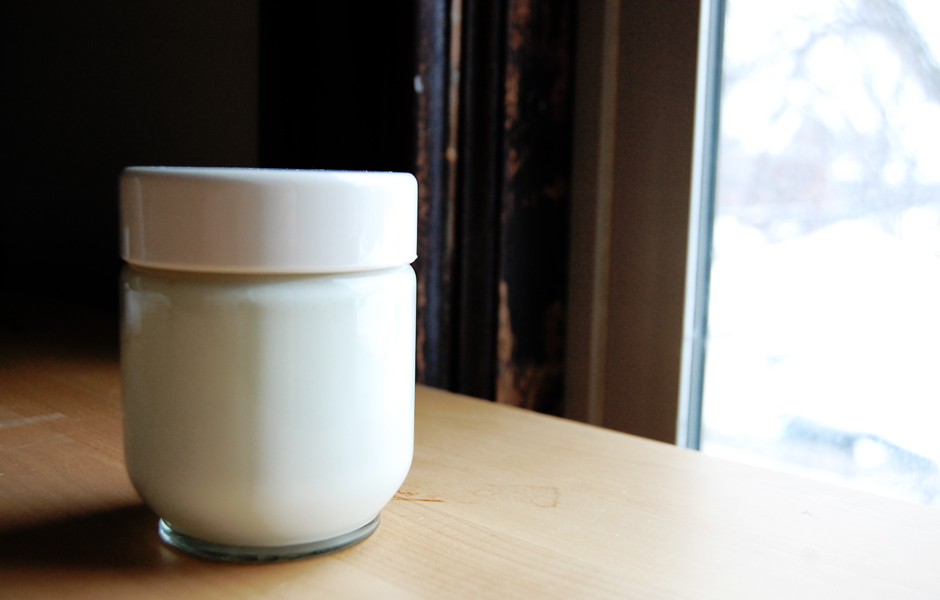I took myself on a trip to Poplar Hills Goat Dairy in Scandia, Minnesota, a cozy yet highly productive goat farm. Are you in the Twin Cities? I’ve bet you’ve seen their pasteurized milk and cheeses for sale around here, then. The stoic little milk quarts with the sweet brown goat on the front? That’s Poplar Hill. I decided to make the trip to see them not only because it happens to be baby goat season, but because it’s legal to buy raw goat milk in Minnesota if the customer comes to the farm and purchases it–and I wanted that raw milk. Two gallons, sold! Raw versus pasteurized milk, it’s a very passionate topic, but tonight all this blog is meant to see of that debate and my thoughts on it is that I’m just a greedy creature who wants the most nutritional bang for her buck (well… doe… goat jokes, anyone?). So what did I do with the milk? I froze some for later, drank a bit here and there and made yogurt and kefir. Smooth and mellow, both preparations couldn’t be happier–and neither could I or those goats.
Raw Milk Yogurt
(from Nourishing Traditions)
1 quart raw goat milk
1 T yogurt (commercial or from previous batch)
2 T + 2 t. yogurt (commercial or from previous batch)
thermometer
Place the quart of raw goat milk in a double boiler and heat to 110 degrees. Remove 2 tablespoons of the warm milk and add 1 tablespoon yogurt. Stir well and pour into a quart-sized wide-mouth mason jar. Add a further 2 tablespoons plus two teaspoons yogurt to the jar and stir well. Cover tightly and place in a dehydrator set at 100 degrees for 8 hours. Transfer to the refrigerator.
Raw Milk Kefir
(from Nourishing Traditions)
2 cups raw goat milk, room temperature
1 T kefir grains, or 1 package kefir powder, or 2 T kefir (commercial or from previous batch)
If using kefir grains, place them in a fine mesh strainer and rinse with filtered water. Place milk in a clean wide-mouth, quart-size mason jar. Add kefir grains, powder or commercial kefir to milk, stir well and cover loosely with a cloth. Place in a warm place for 12 hours to 2 days. If using the powder, kefir is ready when it thickens, usually within 24 hours. If using grains, stir vigorously occasionally to redistribute the grains. Pour the kefir through a strainer into another jar to remove the grains. Store in the refrigerator.

roz
Yum.